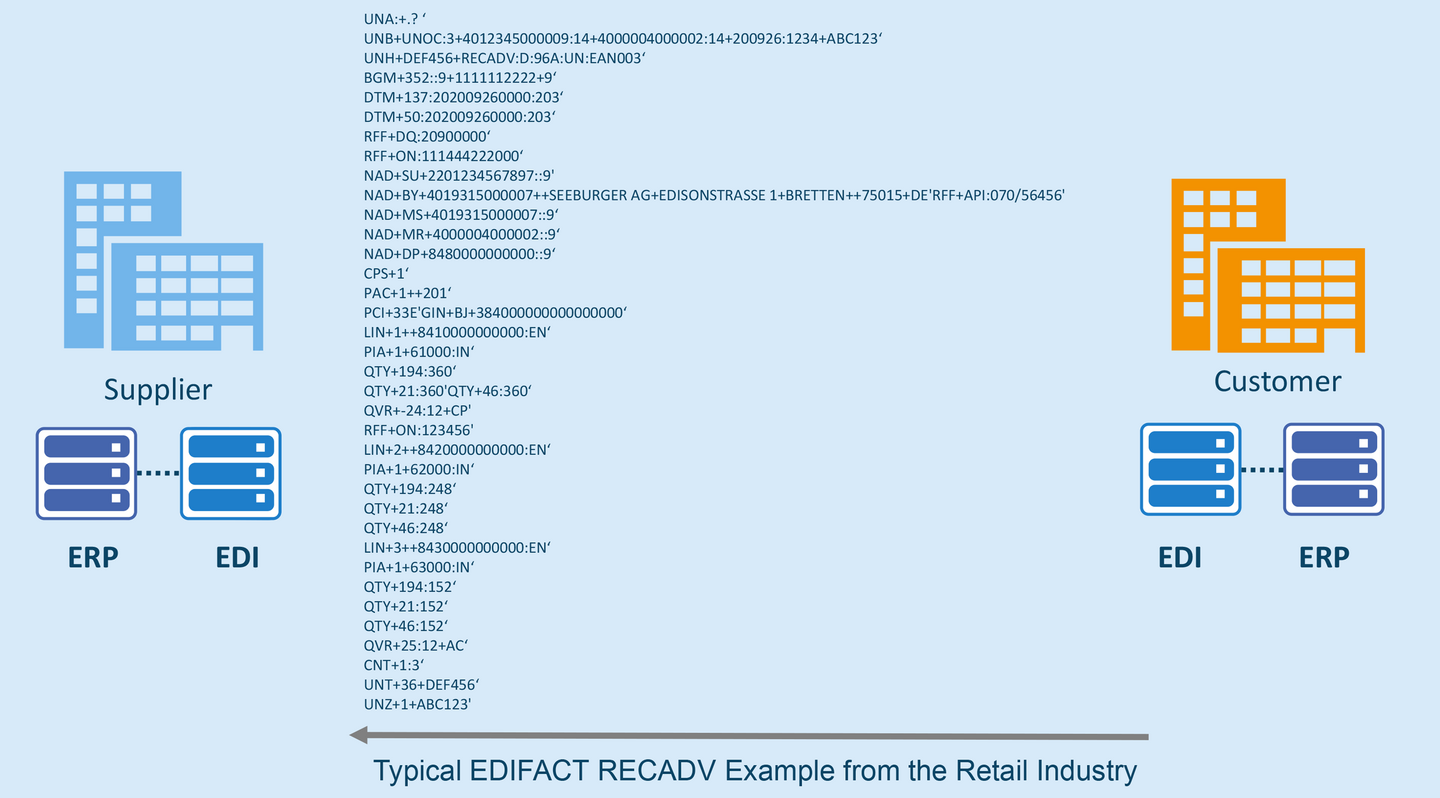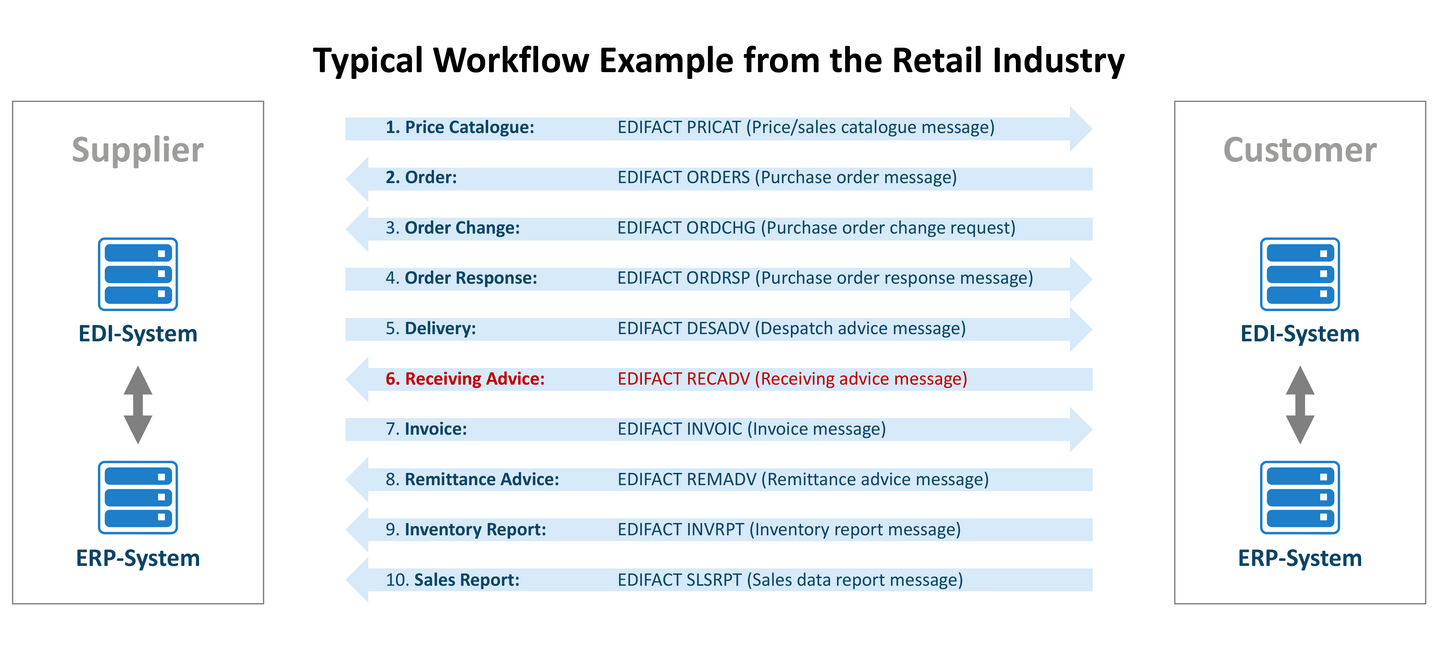
What is an EDIFACT RECADV Message?
The EDIFACT RECADV (RECeiving ADVice) message is used to report the physical receipt of ordered goods. Along with received goods, the customer can also register any discrepancies from their expected order, such as product type, quantity, or packaging. With this information, the supplier can then adjust future invoices for this customer. It follows the EDI message standard UN/EDIFACT and is a typical message type in the electronic purchasing process for the manufacturing and retail industries.
The use of the EDIFACT RECADV Message
A customer usually sends a RECADV message to a supplier once an order has been delivered. The RECADV message can relate to one or more orders specified within previous EDIFACT ORDERS, DELFOR, or DELJIT messages. The information sent back will detail any discrepancies between what was initially ordered and expected to arrive within a delivery.
RECADV messages are generated via a customer's ERP system in their proprietary ERP data format, like for instance SAP IDoc. This data is converted into the customer's required EDI RECADV structure via an EDI solution and sent. Once received by a supplier, they will know of any discrepancies forwarded to the customer.
How does a typical EDIFACT RECADV Structure look like?

The EDIFACT RECADV message structure details the customer’s feedback of a previous order, sent from the supplier. A message can refer to one or more orders and/or delivery points. An EDI message is sent, received, and processed by an EDI solution. The solution can be an EDI Cloud Service or EDI software for in-house usage.
A typical EDIFACT RECADV Message includes:
- Purchase and other specific order reference numbers
- Batch and packaging details
- Item or goods reference number
- Ordered, delivered and quantity variance amounts
Processing of the EDIFACT RECADV Message
Once a supplier receives a RECADV from their customer, they can be made aware of any discrepancies between what was ordered and what was received, or if any goods were damaged in transit. Off the back of this, they can then arrange for any further deliveries of goods or replacement products to the customer, and final invoices can be generated and sent.
EDIFACT RECADV Example in the EDI Workflow
Within EDI, many different documents are transferred between a customer and a supplier. These usually follow a specific sequence of steps, dependent on the industry they are trading in. Here is an example of this flow with the Retail sector and where the RECADV document would sit in this chain.

Benefits using EDI and the EDIFACT RECADV Message
Exchanging planning documents via ANSI X12 EDI 830 for customer and supplier
Any discrepancies, damages, or packaging details can be detailed
Invoices can be updated based on these details, and correct monetary values can be requested
Ensure stable use of EDIFACT Receiving Advice
When you look into replacing your legacy EDI solution with state-of-the-art technology, you should check out your options to operate in a stable and cost effective way. SEEBURGER provides you all the choices being it an EDI Cloud Service in the SEEBURGER Cloud or public cloud environments like the ones from Google, Azure, AWS, etc. as well as an on-premises software solution.









